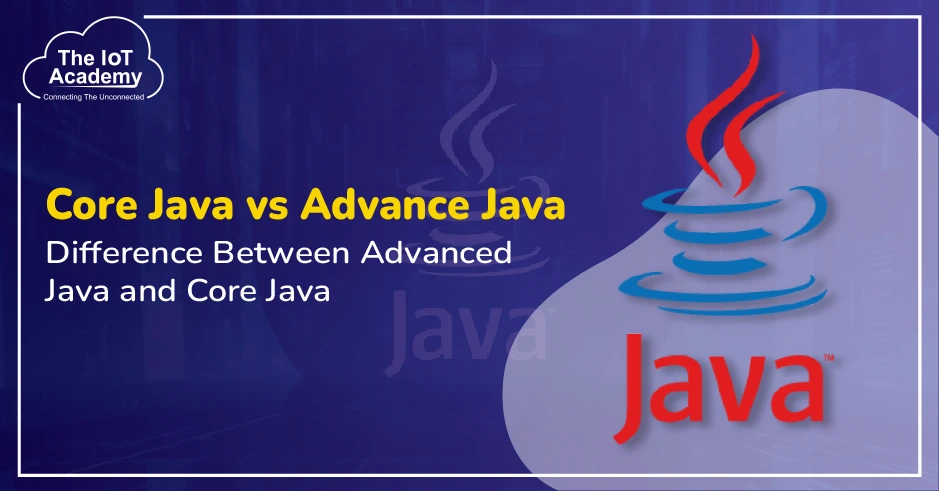Welcome to the world of Java programming, where the Java Virtual Machine (JVM) plays a pivotal role in executing Java applications. In this blog, we will delve into the intricate details of JVM, exploring its architecture and unraveling the mysteries behind its functioning. Whether you're a seasoned Java developer or just starting with programming, understanding JVM is essential for optimizing your Java applications. Let's embark on this journey to demystify what Java Virtual Machine is and the working of JVM.
What is Java?
Java is a type of computer language that helps people make different kinds of programs for things like websites, phones, and business tools. It's easy to learn and a lot of people use it because it's similar to another language called C++.
What is a Java Virtual Machine?
The JVM is like a special computer program that helps run Java applications on different devices and systems by understanding and executing their code, making sure they work smoothly everywhere.
JVM Architecture
Java developers need to know how it works so they can make their code run better and faster. Let's explore the important parts that show the architecture of the JVM:
- Class Loader Subsystem: The ClassLoader is the first thing the JVM does when running a Java program. It puts the classes you wrote into the computer's memory so they can be used. This helps save memory because it only loads the classes when they are required, making things work more efficiently.
- Runtime Data Area: The JVM's memory is like different rooms, each with a job. One room, called the heap, holds things like objects while the program is running. It allows for preserving the entirety of prepared and walking smoothly.
- Execution Engine: The JVM's Execution Engine does the job of making the code run. It has a translator called the Just-In-Time compiler that turns the code into a language the computer understands quickly. This helps the program start fast, and then it switches to a more efficient way of running the code for better performance.
- Native Interface: The Native Interface in Java lets Java programs talk to other programs written in languages like C and C++. This makes Java programs more flexible and able to work with different types of software.
How Java Virtual Machine Works
The working of JVM involves interpreting and executing Java bytecode. It manages memory, provides a runtime environment, and ensures platform independence. JVM is like a translator that helps run Java programs on different types of computers, making sure they work smoothly without worrying about the specific computer details. Here's an overview of how the Java Virtual Machine works:
Compilation of Java Source Code:
- Java source code is plain text saved in files with a `.java` extension.
- The Java compiler (`javac`) changes the human-readable Java code into bytecode, which is like a set of instructions for the Java Virtual Machine.
Java Bytecode:
- The Java compiler makes files with a `.class` ending that holds Java bytecode.
- Bytecode is a middle step that works on any computer or system—it's not just for one kind of hardware or operating system.
Class Loader:
- When you run a Java program, the JVM's class loader puts the classes into memory.
- The class loader finds and puts the instructions (bytecode) for the classes the program uses into memory.
Bytecode Verification:
- Before starting, the JVM checks the bytecode to make sure it follows the rules of the Java language.
- This step ensures the program is safe from some security problems and stays correct.
Execution Engine:
- The JVM's engine reads and follows the instructions in the bytecode to make the program work.
- Some JVMs use Just-In-Time (JIT) compilation to change the instructions into machine code while the program is running, making it faster.
- Other JVMs may change the instructions into machine code before running the program, and this is called Ahead-Of-Time (AOT) compilation.
Garbage Collection:
- The JVM's garbage collector finds and gets rid of things in the computer memory that are not needed anymore, so there's more space for the program to use.
- Doing this helps the computer use memory well and stops memory from piling up and causing problems.
Exception Handling:
- The JVM helps deal with problems that might happen while the program is running.
- When something unexpected happens, the JVM figures out the right way to deal with it using its exception-handling system.
Native Interface:
- The Java Native Interface (JNI) lets Java talk to and understand programs written in different languages, like C and C++.
- The Java Virtual Machine is like a home for Java programs, making sure they can run on different computers and taking care of how they work and use resources.
Conclusion
In conclusion, the Java Virtual Machine serves as the backbone of Java's cross-platform compatibility and execution. Understanding its architecture and working mechanisms is crucial for Java developers aiming to optimize their applications. Whether you're troubleshooting performance issues or ensuring the security of your code, delving into the intricacies of JVM is a valuable endeavor. As we continue to explore the vast world of Java programming, the role of JVM remains paramount, shaping the seamless execution of Java applications across diverse environments.
Frequently Asked Questions
Ans. The Java Development Kit (JDK) isn't a Java Virtual Machine, but it has tools and things needed to make Java programs. JDK has the Java Runtime Environment (JRE), which includes the JVM running Java programs.
Ans. You can see the JVM working when a Java program runs the same on different computers without changing anything. Java's instructions work on any system with a matching JVM, showing that Java can run on any platform.







